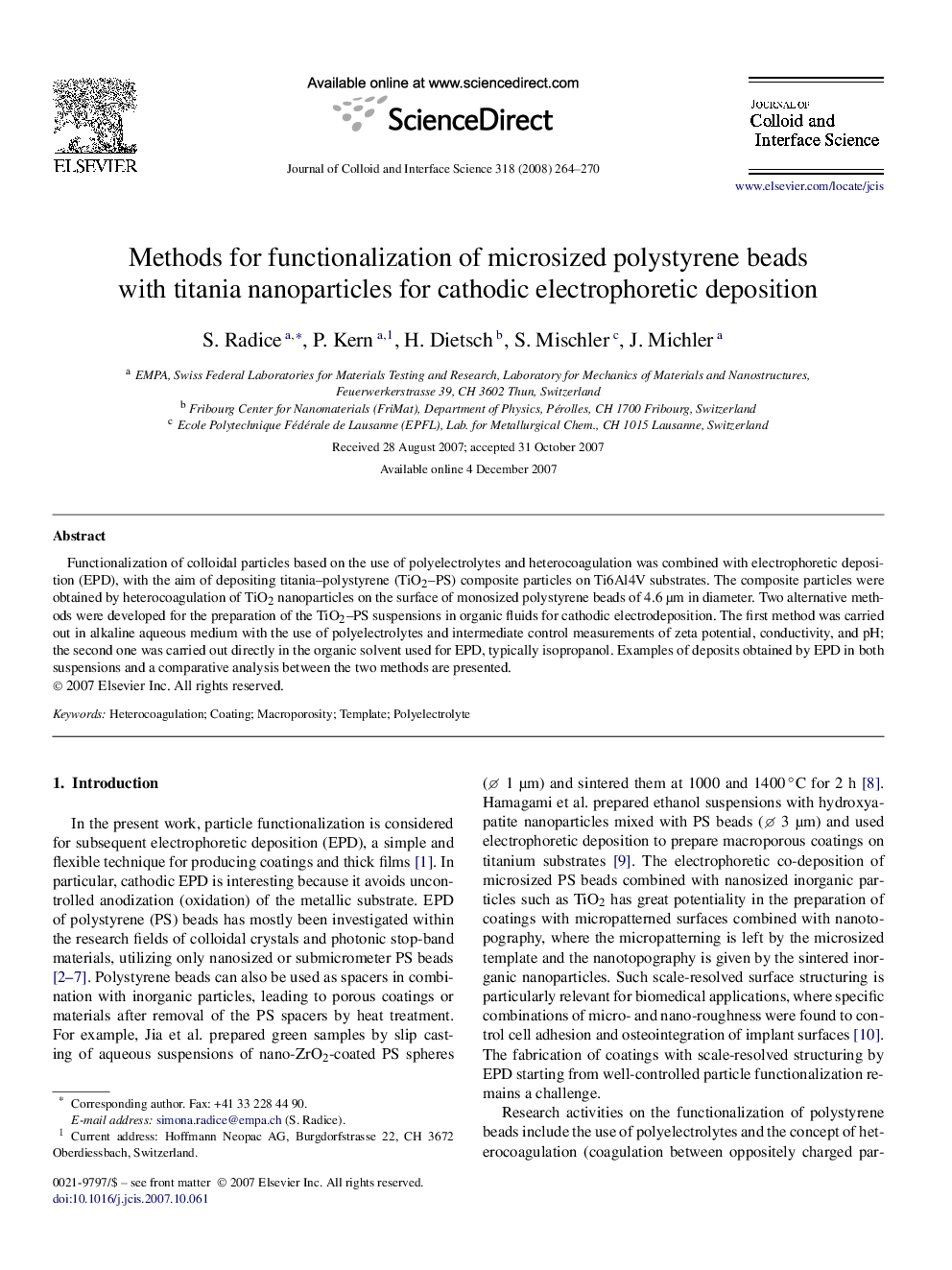| Article ID | Journal | Published Year | Pages | File Type |
|---|---|---|---|---|
| 611370 | Journal of Colloid and Interface Science | 2008 | 7 Pages |
Functionalization of colloidal particles based on the use of polyelectrolytes and heterocoagulation was combined with electrophoretic deposition (EPD), with the aim of depositing titania–polystyrene (TiO2–PS) composite particles on Ti6Al4V substrates. The composite particles were obtained by heterocoagulation of TiO2 nanoparticles on the surface of monosized polystyrene beads of 4.6 μm in diameter. Two alternative methods were developed for the preparation of the TiO2–PS suspensions in organic fluids for cathodic electrodeposition. The first method was carried out in alkaline aqueous medium with the use of polyelectrolytes and intermediate control measurements of zeta potential, conductivity, and pH; the second one was carried out directly in the organic solvent used for EPD, typically isopropanol. Examples of deposits obtained by EPD in both suspensions and a comparative analysis between the two methods are presented.
Graphical abstractNegatively charged colloidal polystyrene beads of 4.6 μm in diameter were functionalized with positively charged TiO2 nanoparticles and deposited cataphoretically on Ti6Al4V substrates. Two procedures for the preparation of the polystyrene–TiO2 composite particles based on heterocoagulation were developed and compared.Figure optionsDownload full-size imageDownload as PowerPoint slide
